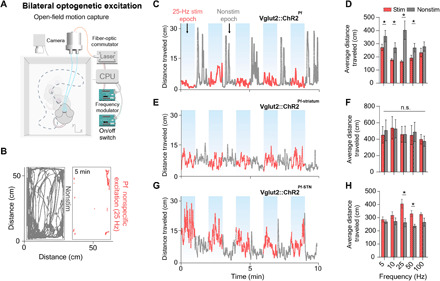Fig. 3. Bilateral Pf-STN but not Pf-striatum pathway excitation increases locomotion, and nonspecific Pf stimulation reduces it.

(A) For bilateral stimulation experiments, mice were placed in an open-field arena equipped with a motion capture camera. (B) Representative example of cumulative movement traces in the open field of stimulation and nonstimulation epochs. (C) Representative example of 25-Hz stimulation across the entire session for nonspecific Pf group (n = 6). (D) Nonspecific Pf excitation significantly reduced the average distance traveled compared to the nonstimulation epochs (two-way RM ANOVA, F1,50 = 22.52, P < 0.0001). Post hoc comparison using Sidak’s multiple comparison test indicated that 25 Hz was the only epoch that was significantly lower. (E) Representative example of 25-Hz stimulation across the entire session for Pf-striatum group (n = 8). (F) Pf-striatum excitation had no effect on distance traveled (P > 0.05). (G) Representative example of 25-Hz stimulation across the entire session for Pf-STN group (n = 8). (H) Pf-STN terminal excitation increased the average distance traveled compared to nonstimulation epochs (two-way RM ANOVA, (F1,50 = 22.28, P < 0.0001, n = 5 mice). Post hoc tests indicated that the average distance traveled during 25 and 50 Hz epochs was significantly higher (P < 0.05).
